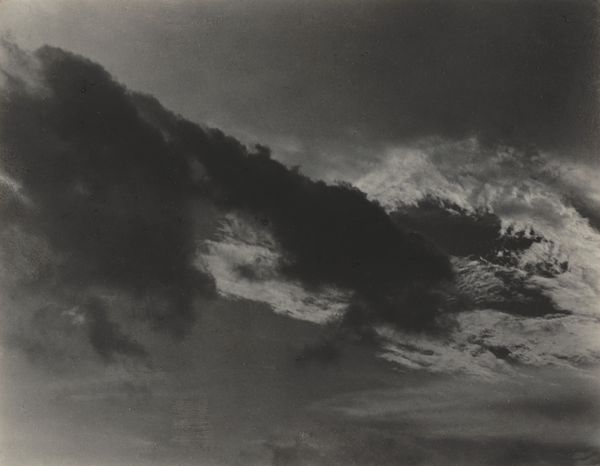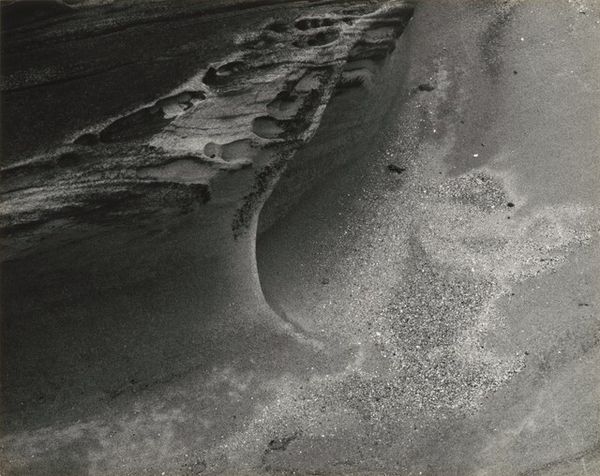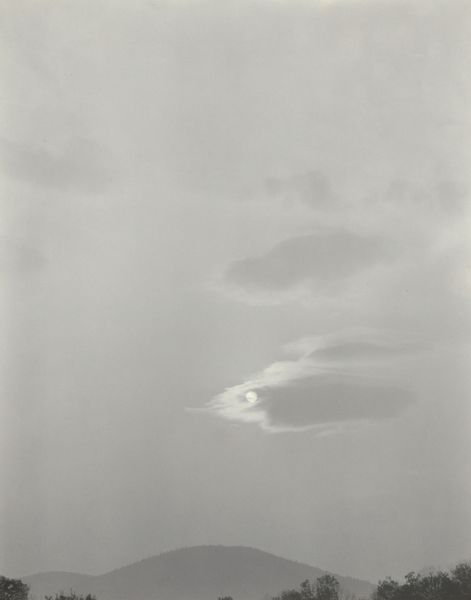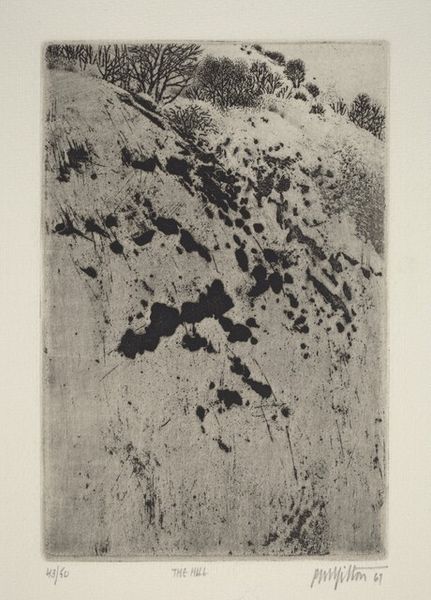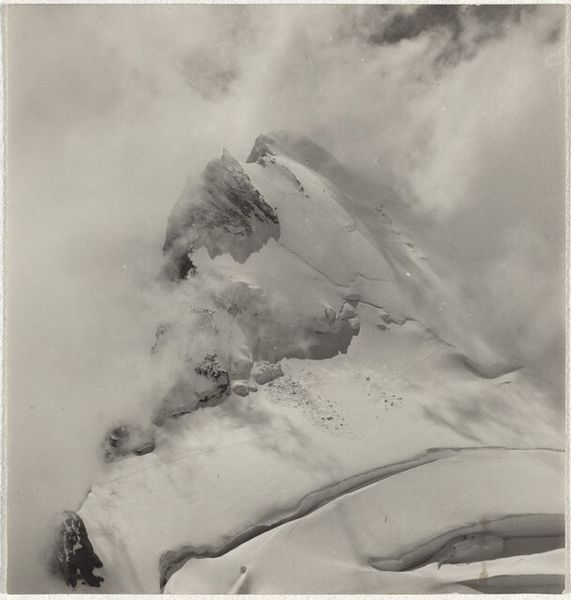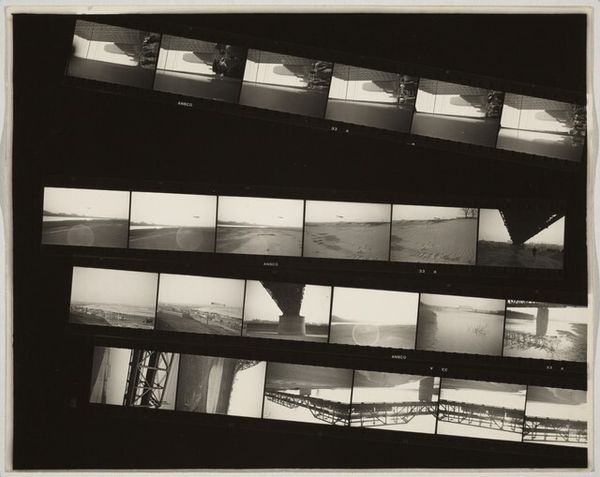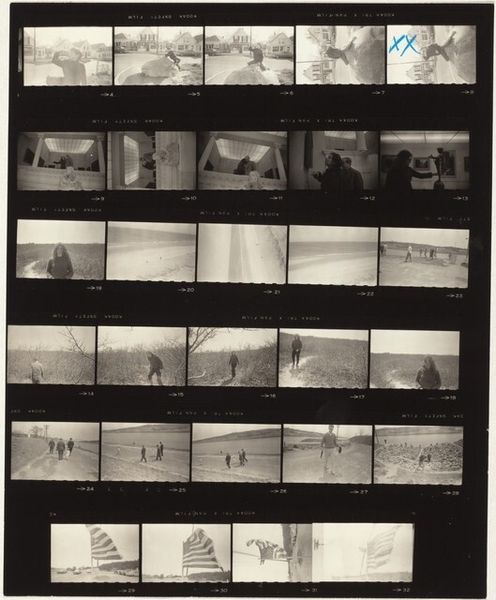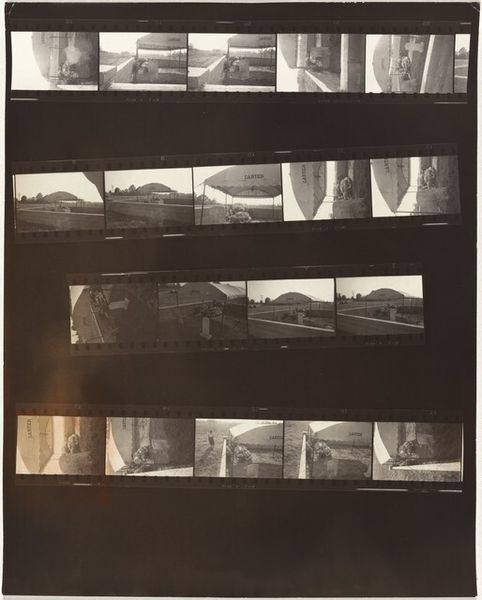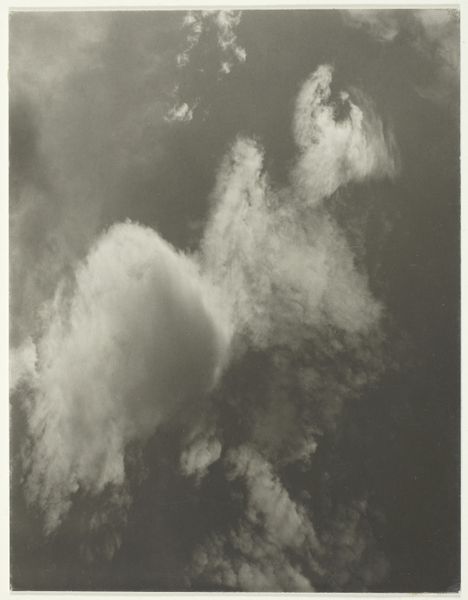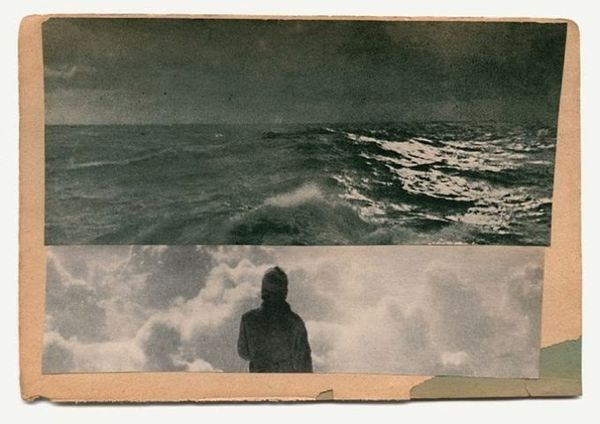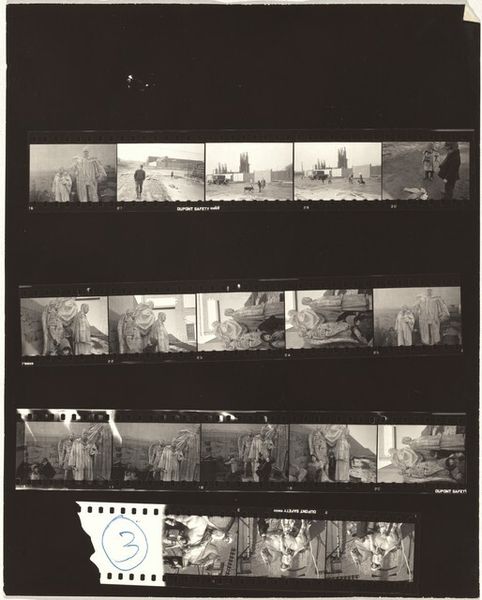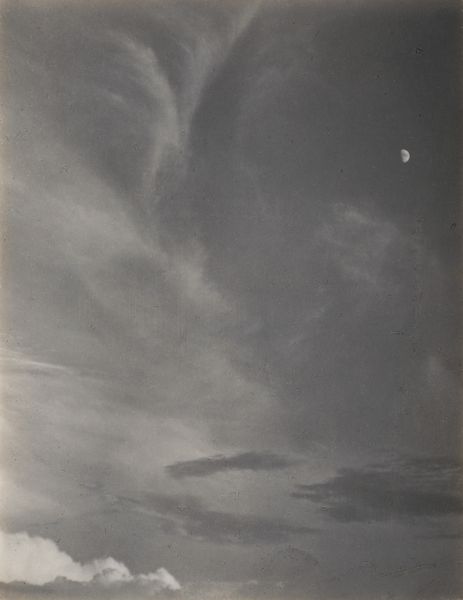
Dimensions: image: 49.3 x 40.4 cm (19 7/16 x 15 7/8 in.) sheet: 50.7 x 40.9 cm (19 15/16 x 16 1/8 in.)
Copyright: National Gallery of Art: CC0 1.0
Editor: Here we have Robert Frank's "Mabou Footage" from 1979, a gelatin-silver print. It’s divided horizontally into two frames. The whole piece feels bleak and grainy. What do you see here? Curator: I'm immediately struck by the artist’s hand, evident in the choice of gelatin-silver. Think about the darkroom process, the physical labor of developing these images, then juxtaposing them in this diptych format. It rejects the pristine image, foregrounding process. Why this doubling? Is it a critique of the ease of image production at the time, forcing us to consider the choices involved? Editor: That's fascinating! I was just seeing it as a kind of film strip, maybe a cinematic idea. But thinking about the actual darkroom work changes it completely. The landscape itself seems harsh and unforgiving too. Curator: Precisely. This landscape – what labor shaped it? What industries exploited it? Frank isn't just capturing a view; he's presenting a place that has been actively produced, consumed. Even the vertical line slashing the photograph functions as a visual barrier to consumption. Editor: So, you’re suggesting the way the image is made and what the image is depicting, the landscape, are intertwined to discuss labor and consumption? Curator: Absolutely. Frank's manipulation of the gelatin-silver print moves us past just representation towards something more tangible. It urges us to confront the means of artistic creation and what those means are creating. It pushes against art that denies its own constructed nature. Editor: This makes me reconsider black and white photography’s connection with realism! Now, the print itself appears as evidence of a conscious practice and position. Curator: Exactly! Recognizing the human intervention and social processes embedded within a ‘landscape’ allows a deeper encounter with it, not as a passive viewer, but as someone questioning its manufacture. Editor: Thanks for opening my eyes to the material choices informing the meaning. It's been a lesson in looking beyond the surface!
Comments
No comments
Be the first to comment and join the conversation on the ultimate creative platform.
